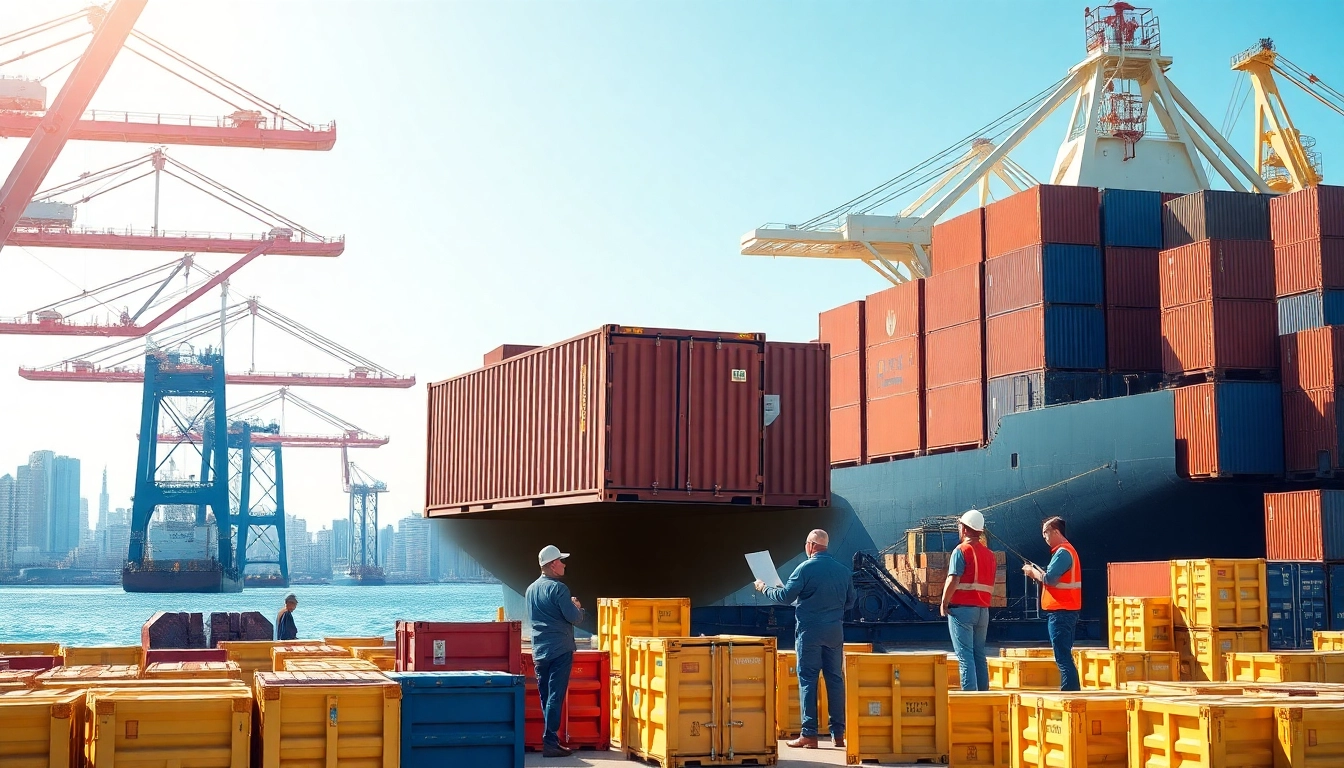What Are Export Tariffs?
Definition and Overview
Export tariffs, sometimes referred to as export duties, are taxes imposed by governments on goods that are being exported out of a country. They serve as a financial charge levied on the exporter and can vary in rate depending on the type of goods, the country of origin, and current trade policies. The primary objective of such tariffs is often to raise revenue for the government and to regulate the flow of goods leaving the country. This is notably different from import tariffs, which are aimed at raising the cost of imports to protect domestic industries. In this complex landscape of global trade, export tariffs play a crucial role in shaping the competitive dynamics of various industries worldwide.
Types of Export Tariffs
Export tariffs can take several forms, each designed for specific objectives:
- Specific Tariff: This is a fixed fee imposed on each unit of a commodity exported. For instance, if a country sets a specific tariff of $10 on every ton of wheat exported, a farmer shipping 50 tons would pay $500.
- Ad Valorem Tariff: Unlike specific tariffs, ad valorem tariffs are based on the value of the goods being exported. For example, if the tariff is set at 20% and the total value of the exported goods is $1,000, the exporter would owe $200.
- Export Quotas: While not a tariff in the traditional sense, export quotas limit the quantity of a particular good that can be shipped out of the country. This is often used to stabilize domestic markets or to manage the availability of resources.
- Temporary Tariffs: Some countries implement temporary tariffs during specific situations such as natural disasters or economic downturns to control resources and stabilize domestic markets.
Differences Between Export Tariffs and Import Tariffs
Understanding the fundamental differences between export and import tariffs is essential for businesses engaged in international trade:
- Purpose: Import tariffs are primarily designed to protect domestic industries by making foreign products more expensive, thereby encouraging consumers to buy local. Conversely, export tariffs can incentivize domestic production while controlling the outflow of essential or strategically significant goods.
- Impact on Trade Balance: Import tariffs can directly influence a country’s trade deficit or surplus by affecting the volume of imports. In contrast, export tariffs can reduce the competitiveness of domestic goods on international markets, potentially leading to decreased export volumes.
- Revenue Generation: Both import and export tariffs can generate significant revenues for governments, but their economic implications differ widely. Export tariffs can decrease overall revenue if they deter exports significantly.
How Export Tariffs Affect Global Trade
Impact on Prices and Competitiveness
The imposition of export tariffs can significantly impact the pricing of goods on the global market. When tariffs are applied, the costs increase for exporters who may pass these costs onto foreign buyers. This can result in higher prices for consumers in importing countries, making products less competitive compared to those from countries without export tariffs.
For instance, if a country exports steel and imposes a 10% export tariff, international buyers may look for alternatives, such as steel from other countries without such tariffs. This shift can lead to a reduction in market share for the exporting country and, ultimately, lower sales and revenue for domestic producers. Thus, businesses need to navigate these tariff landscapes carefully to maintain their competitive edge.
Influence on Supply Chains
Export tariffs can also disrupt established supply chains. Companies rely on predictable cost structures to manage their operations efficiently. Any abrupt changes in tariff policies can impact the cost of raw materials and intermediary goods, forcing companies to reassess their pricing strategies and operational viability.
For example, a U.S. manufacturer that depends on importing components from various countries may see costs rise due to increased tariffs on exported components. This not only impacts production costs but may also lead to delays as companies scramble to find cost-effective suppliers, ultimately affecting delivery timelines and customer satisfaction.
Total Economic Impact
The total economic impact of export tariffs extends beyond the immediate financial implications for exporters. They can lead to broader economic consequences, including shifts in employment, domestic production levels, and even bilateral trade relationships. Countries imposing high export tariffs may drive businesses to relocate to nations with more favorable trade conditions, which could lead to job losses and a decrease in economic activity in the original country.
Furthermore, retaliatory measures by trading partners can escalate into trade wars, resulting in a protracted decline in trade volumes among affected countries. An example of this is the U.S.-China trade conflict which saw escalating tariffs and significant consequences for exporters from both nations.
Navigating Export Tariffs: A Guide for Businesses
Compliance and Regulation Insights
For businesses engaging in international trade, understanding compliance and how to navigate export tariffs is crucial. Companies must familiarize themselves with the tariff classifications relevant to their goods and stay updated on changing regulations, as international trade laws can be highly dynamic and subject to sudden changes due to geopolitical events.
Many governments provide guidelines and online resources to help companies manage their export processes. Engaging with customs brokers or trade compliance specialists can also facilitate smoother navigation through the regulatory framework, ensuring that all legal obligations are met while minimizing costs associated with delays or misunderstandings.
Best Practices for Mitigating Tariff Costs
To effectively mitigate the costs associated with export tariffs, businesses should consider the following strategies:
- Product Re-engineering: Assess whether the goods being exported can be re-engineered or packaged in a way that qualifies for a lower tariff classification.
- Market Diversification: Explore new markets where export tariffs may be lower or nonexistent. This strategic move can help offset losses from traditional markets experiencing higher tariffs.
- Leverage Free Trade Agreements (FTAs): Utilize FTAs whenever possible to benefit from reduced or eliminated tariffs when exporting to partner countries.
- Negotiate Supplier Agreements: Work closely with suppliers to secure lower prices for raw materials or components that may be affected by exporting tariffs.
Case Studies and Examples
Several case studies illustrate how businesses have effectively navigated the challenges posed by export tariffs. For instance, a U.S. electronics firm faced escalating tariffs on components sourced from China. By diversifying its supplier base to include manufacturers in Southeast Asia, it not only mitigated the impact of tariffs but also improved its supply chain resilience against future disruptions.
Another example is seen in the agricultural sector, where farmers in certain countries adapted by classifying their export products to benefit from specific tariff exemptions, allowing them to maintain competitive pricing in lucrative international markets despite higher general tariffs.
Current Trends in Export Tariffs
Political Factors Influencing Tariff Changes
Political dynamics significantly affect the structure and implementation of export tariffs. Trade relations can shift rapidly due to changes in government, international agreements, or geopolitical tensions. For example, recent developments in U.S.-China relations have brought about significant changes in tariff rates, affecting millions of dollars in goods imported and exported between the two nations.
Additionally, domestic political pressures can lead governments to increase export tariffs as a means of protecting local industries from foreign competition, which ultimately reshapes the trade landscape. Understanding these trends allows businesses to anticipate potential changes and adapt their strategies accordingly.
Recent Case Studies and Their Outcomes
Recent case studies provide critical insight into how tariff changes can impact various industries. The steel and aluminum tariffs imposed by the U.S. resulted in both immediate and long-term effects, including increased domestic production in the U.S. but also raised costs for industries dependent on these materials, such as construction and automotive manufacturing.
In contrast, Canada’s strategic approach of negotiating certain exemptions for its exported goods led to a relatively stable market position despite broader imposition of tariffs on steel products. These contrasting outcomes highlight the importance of strategic negotiation and adaptability in times of tariff uncertainty.
Future Predictions for Export Tariffs
As global trade continues to evolve, predicting future trends in export tariffs becomes more complex yet critical. Analysts suggest that as countries increasingly prioritize homegrown industries, we may see a rise in protectionist policies leading to more export tariffs in key sectors. However, with the push for free trade agreements and multilateral trade relations, there may also be movements towards tariff reductions, particularly for nations that consistently engage in fair trade practices.
Overall, businesses must stay vigilant and proactive in tracking these potential changes, utilizing a combination of technological tools, market research, and consulting experts in order to craft informed strategies for their export operations.
Resources for Understanding Export Tariffs
Key Government Regulations and Guidelines
Understanding and navigating export tariffs requires up-to-date knowledge of government regulations and guidelines. Each country has specific rules governing trade and exports, which may include comprehensive documentation, tariff schedules, and compliance requirements that businesses must adhere to.
Government websites and trade organizations frequently provide resources and updates regarding changes in tariff structures and compliance stipulations. Engaging with these resources is critical to ensuring adherence to the law and optimizing export strategies.
Helpful Tools for Calculation
Accurate calculation of export tariffs can be complex, given the various rates and regulations at play. Businesses can benefit from utilizing various calculation tools provided by governmental trade departments and independent financial services, which help estimate costs associated with exporting goods. These tools can assist businesses in budgeting, pricing strategy, and profit margin analysis.
Expert Opinions and Research Articles
Accessing expert opinions and research articles offers valuable insights into current trends and developments regarding export tariffs. Industry reports, academic articles, and commentaries from trade specialists provide a wealth of knowledge that businesses can leverage to inform their decision-making processes. Engaging with such literature also helps identify successful strategies adopted by peers in navigating the often tumultuous waters of export tariffs.



